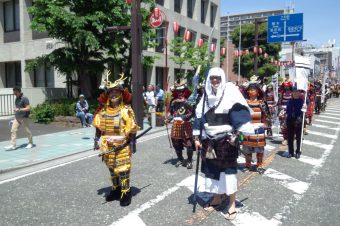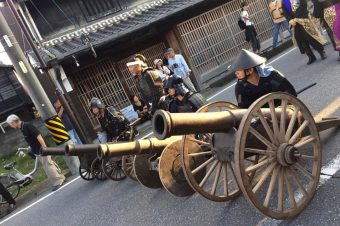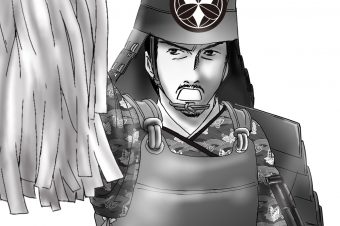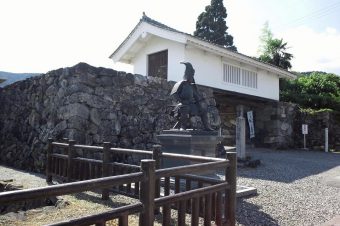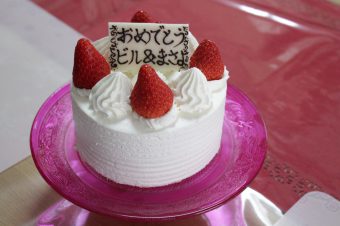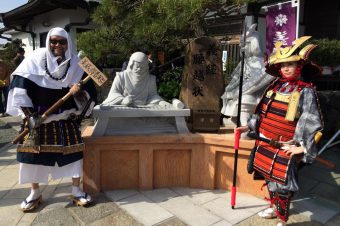Can a feudal era General and famed military strategist act as a modern day Cupid?
Episode Five: Visiting Zendouji with the General’s direct descendent
Early morning on May 3rd, I hopped on my trusty steel steed and headed down to Gifu Prefecture. I encountered several massive traffic jams en route, but managed to arrive at Tarui shortly after noon. Yohsuke would show up about an hour later. In the meantime, Mr. Fuwa showed me what the daytime portion of the Hikiyama Festival was about, local children performing kabuki plays in the hikiyama. I happened to be watching the East Tarui hikiyama, which featured a comedy play about fishing women out of a pond. Mr. Fuwa and I then went to Tarui Station to meet Yohsuke. At the station, Mr. Fuwa pointed out to me the yellow stripe marking the center of the escalator steps. He told me Tarui marked the division in Japan regarding people standing on and people walking up/down escalator steps. East of Tarui, it was customary for people to stand still on the left side of the escalator steps while people walked past on the right side. West of Tarui, the sides were reversed. Hence, the yellow stripe in the center of the escalator steps at Tarui Station, which is close to the formal divide between Eastern and Western Japan. We meet Yohsuke at the ticket barrier, and walked over to the main street of Tarui, which is the former Nakasendo post road.
This is a picture of the three of us at the Tarui Tourism Bureau just after Yohsuke arrived. Yohsuke is in the suit, Mr. Fuwa is the gentleman in the gray vest, and yours truly with the USA suspenders holding up my heavy leather motorcycle pants.
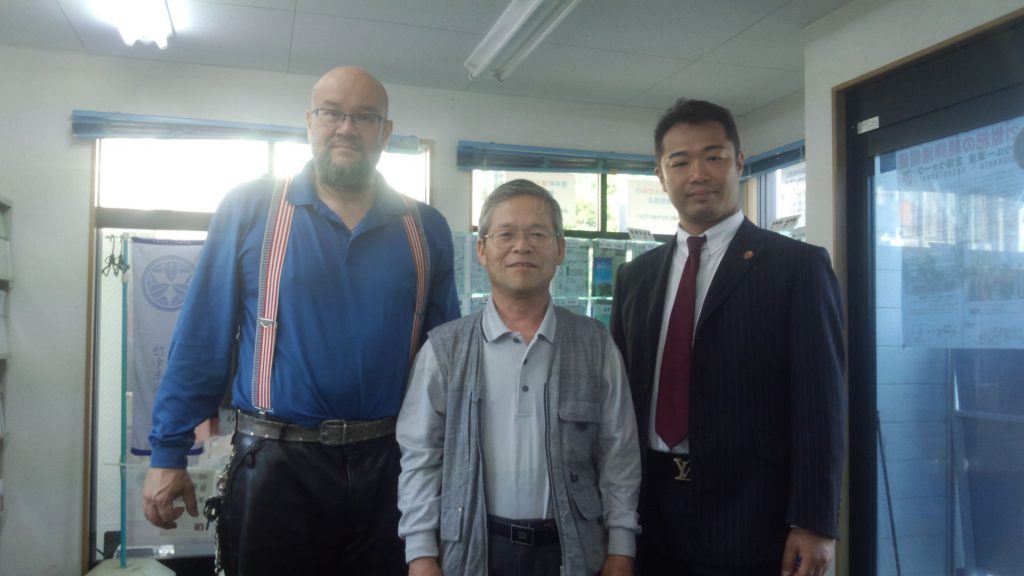
Viewing the festivities just for a bit, Yohsuke and I went to Zendouji to pay our respects at General Hanbei’s gravesite. After going to Lord Hanbei’s grave and offering the traditional flowers, incense, and sake, we had our cab driver take a picture of us in front of the temple gate. The picture turned out to be quite dramatic, and both Yohsuke and I thought it to be a good omen for the future. We are seemingly enveloped by rays of light descending from the sky. Certainly, it appeared General Hanbei approved of us two close friends paying him a visit.
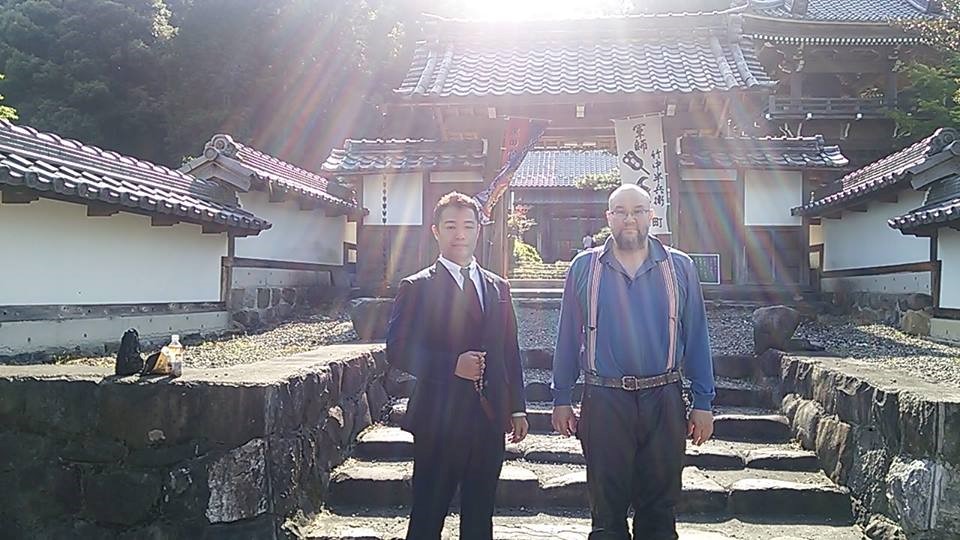
Interestingly, below is a painting of General Hanbei. The actual painting itself is owned by Zendouji Temple. I can see the resemblance between Yohsuke in the photo above and General Hanbei. Can you?
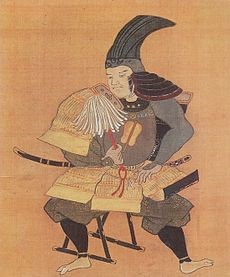
We got back into our cab, and went a little ways down the road leading back to central Tarui. We stopped in front of the flatland fortress established by General Hanbei’s son, Shigekado. The local Iwade tourism bureau happed to be erecting one of those “face cut out” boards, where one sticks one’s head through a hole and becomes the face of a historical character, in this case General Hanbei. After the group was finished setting up the board next to the bronze statue of General Hanbei, Yohsuke asked if he could use the board, and the bureau folks happily obliged. After the picture below was taken, one of the bureau people noticed Yohsuke’s Takenaka family crest lapel pin, and asked if Yohsuke had any connection to Lord Hanbei. They were certainly thrilled to find out the first person ever to use their board was General Hanbei’s direct descendent.
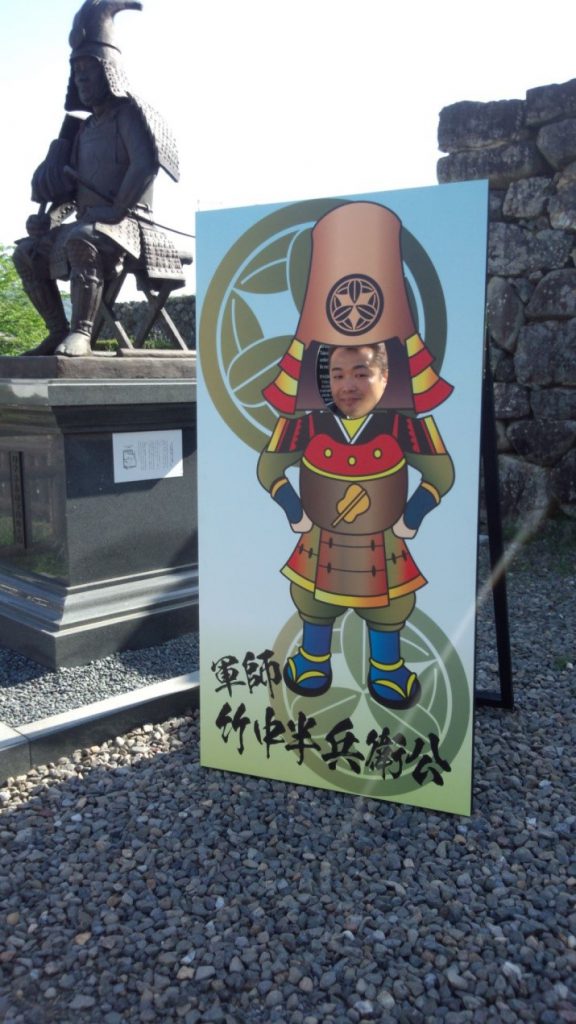
We once again got back in our cab, and the cabbie asked us what the fuss was about. After finding out, he too was thrilled, and told us he was going to brag to his wife how he was the driver for General Hanbei’s descendant. The cabbie went on to mention how so many rekijyo (female history fans) would visit Zendouji Temple at dusk to pay their respects to General Hanbei. He wondered why that was the case, and I jokingly said to Yohsuke the ladies probably went there hoping to meet the General himself after dark. Little did I know how those words would come back to haunt us. Well, Yohsuke, anyway.
Riding the cab back to central Tarui, I had a flash of inspiration concerning Masayo. Up to now I had been pondering what sort of souvenir to get for her (and thereby land another excuse to see her), but couldn’t really think of anything special. Tarui is a small town without any famous local specialties. While I did buy one of the Lord Hanbei polo shirts sold by the Tarui Tourism Bureau, I wasn’t sure how much it would be appreciated by her. Then I remembered how during my first visit to Tarui, I discovered the Komi-brand sauce. By that time I knew Masayo loved the taste of sauce, with yakisoba being her all time favorite food. I also knew how much she disliked processed foods with artificial flavorings and preservatives. What better souvenir to show her how much I cared about her than a couple bottles of all natural, very tasty, Komi-brand sauce? Plus, it wasn’t sold in the Kanto area. YES!
With the Komi-brand sauce safely placed inside my saddlebags, we all went to see the parade. At dusk, the hikiyamas would move along the Nakasendo to the area in front of Yaegaki Shrine, located in the central part of Tarui.
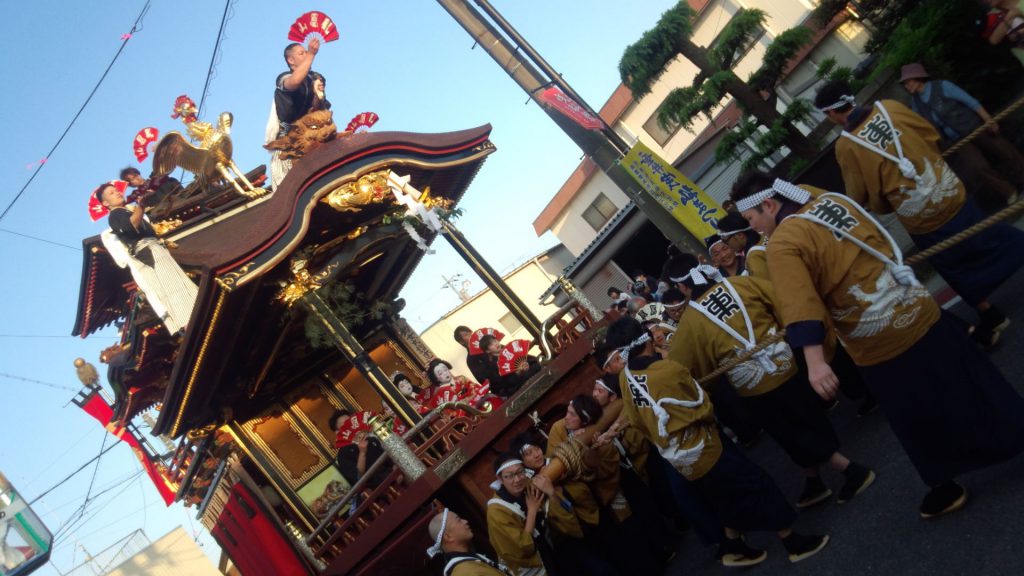
This is a pretty awe inspiring sight. The three hikiyamas, each as tall as a two story house, are parked in a square in front of the shrine, forming a “T” shape. The hikiyama forming the leg of the T faces Yaegaki Shrine. This position of honor rotates amongst East, West and Middle on a yearly basis. They are silhouetted against a backdrop of dark mountains outlined in orange by the setting sun. Standing on top of each hikiyama are young men from Tarui town, waving huge ceremonial paper fans. Very dramatic. Once night falls, a whistle is blown, and there is a race to see which hikiyama can be fully illuminated first, using paper lanterns placed in various locations on the yamas. Once all three hikiyama are brightly lit up, the children of the hikiyama forming the leg of the T put on their kabuki play for the local deity to observe.
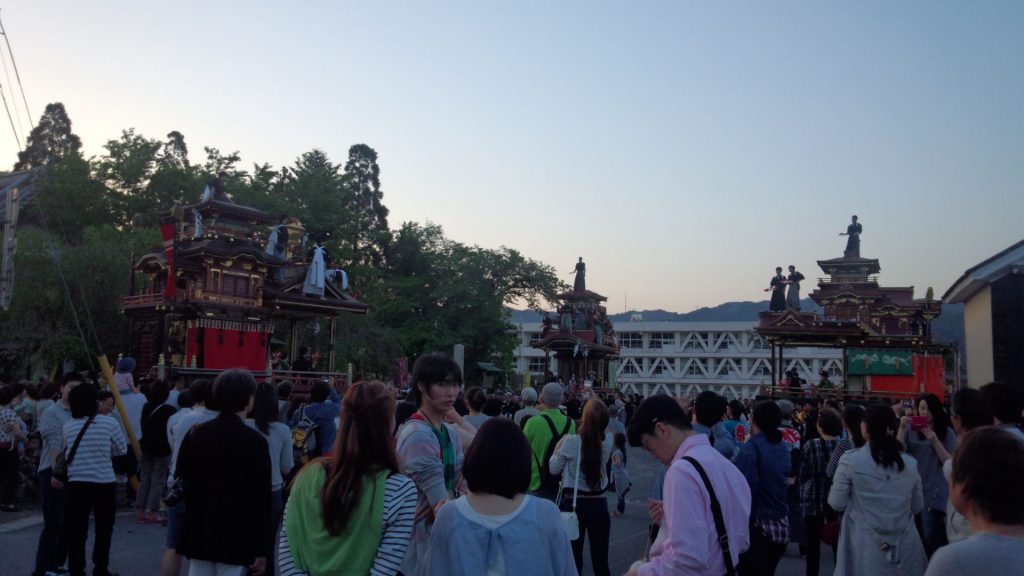
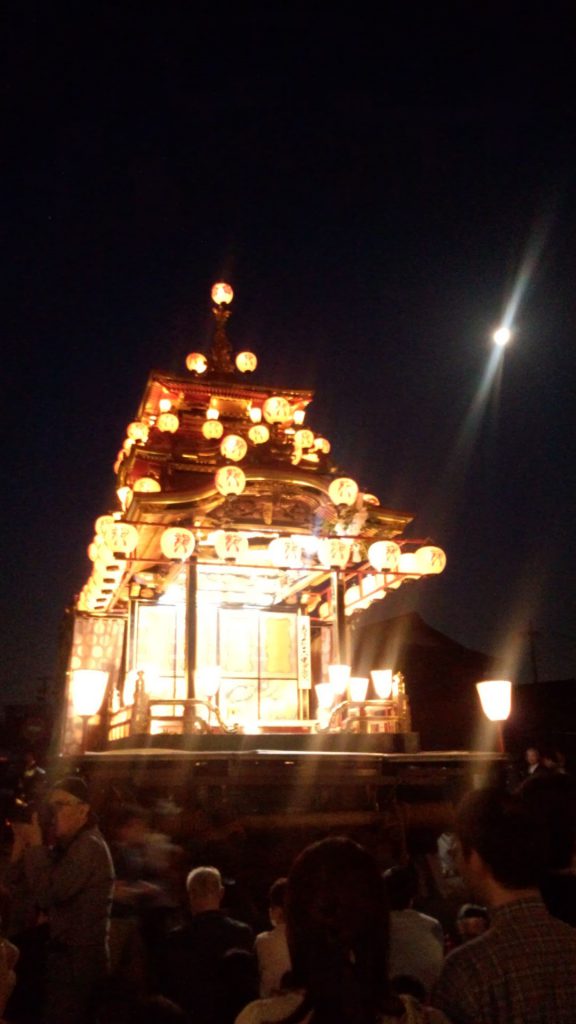
It was a very moving sight, and this is when I really started becoming fond of the town of Tarui.
After watching the night time festivities, Yohsuke, Mr. Fuwa and I ended up going to a local izakaya to celebrate. Over the course of a few beers, Mr. Fuwa mentioned there was a parade held each September, in which some local people dressed up as samurai warriors and paraded through Tarui. I jokingly mentioned how I would be more than willing to haul my Benkei outfit to Tarui and joining the parade. Yohsuke and Mr. Fuwa seemed to think it was a great idea, and so it was determined Mr. Fuwa would address the matter with the Tarui Chamber of Commerce when the time came.
Mr. Fuwa and I sent Yohsuke off at Tarui Station for his long ride back to Tokyo. I then hopped on my bike (my beers were of the non-alcoholic variety) and set off to the city of Ogaki, where I would spend the night before making my way back to Kamakura the next day.
Once again, the key things I would like you to continue to remember:
———————————————————————————————————————————————————————————
Location: Zendouji Temple, Tarui town, Gifu Prefecture. Family temple for the Takenaka family.
Historical persons:
General Hanbei Takenaka, famous Sengoku period military strategist.
Benkei, famous Kamakura period warrior monk.
Lord Yoshitsune Minamoto, famous Kamakura period warlord and brilliant military tactician, Benkei’s chosen liege.
Modern day persons:
Yohsuke Takenaka, General Hanbei’s direct descendant
Bill Young, your humble scribe and modern day Benkei character
Masayo, modern day Yoshitsune character
